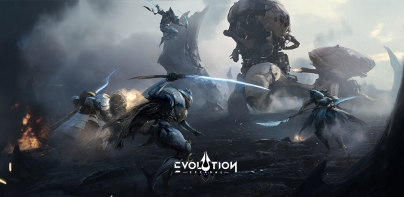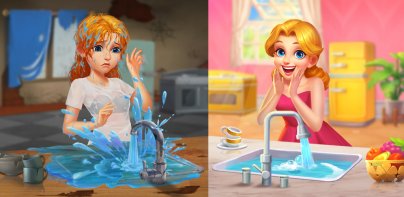


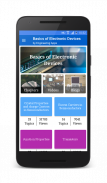
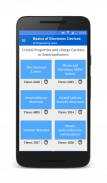
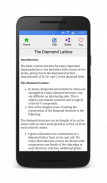
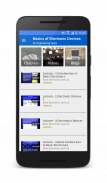
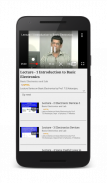
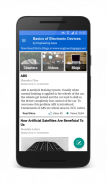
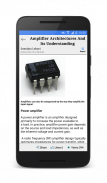

Basics of Electronic Devices

Descrição de Basics of Electronic Devices
The app is a complete free handbook of Basics of Electronic Devices or Microelectronic Devices and Circuits which covers important topics, notes, materials, news & blogs on the course. Download the App as a reference material & digital book for electrical, computer science & electronics engineering programs & degree courses.
This useful App list 140 topics with detailed notes, diagrams, equations, formulas & course material, the topics are listed in 5 chapters. The app is must have for all the engineering science students & professionals.
The app provides quick revision and reference to the important topics like a detailed flash card notes, it makes it easy & useful for the student or a professional to cover the course syllabus quickly before an exams or interview for jobs.
Track your learning, set reminders, edit the study material, add favourite topics, share the topics on social media.
Use this useful engineering app as your tutorial, digital book, a reference guide for syllabus, course material, project work, sharing your views on the blog.
Some of the topics Covered in the app are:
1. Transient and a-c conditions: time variation of stored charge
2. Photodiode
3. P-N-P-N diode
4. Semiconductor Controlled Rectifier
5. Light Emitting Diode
6. Tunnel Diode
7. TRIAC
8. DIAC
9. Insulated Gate Bipolar Transistor
10. GUNN diode- Basic Principle
11. GUNN diode-The Transferred Electron Mechanism
12. PNPN diode- Forward Blocking & conducting mode
13. Solar Cell- Working Principle
14. Solar Cell- I-V Characterstics
15. Rectifiers
16. The Breakdown Diode
17. Photodetectors
18. Photodiode Equations
19. PIN PHOTODIODE
20. Avalanche Photodiode
21. Light Emitting Materials
22. IMPATT diode
23. IMPATT diode operation
24. Semiconductor lasers
25. Semiconductor lasers- Under forward biased
26. Heterojunction Lasers Operation
27. Metal semiconductor field effect transistors (MESFET)
28. MESFET- The High Electron Mobility Transistor (HEMT)
29. The Metal Insulator Semiconductor FET (MISFET)
30. MISFET under different operating condition
31. The Ideal MOS Capacitor
32. MOSFET: Effects of Real Surfaces
33. MOSFET: Interface Charge
34. MOSFET: Threshold Voltage
35. MOS Capacitance Voltage Analysis
36. MOSFET: Time-Dependent Capacitance Measurements
37. Current-Voltage Characteristics of MOS Gate Oxides
38. The MOSFET
39. MOSFET: Output Characteristics
40. Conductance and Transconductance of the MOSFET
41. MOSFET: Transfer Characteristics
42. MOSFET: Mobility Models
43. MOSFET: Effective transverse field
44. Short Channel MOSFET l-V Characteristics
45. MOSFET: Control of Threshold Voltage
46. MOSFET: Threshold Adjustment by Ion Implantation
47. MOSFET: Substrate Bias Effects
48. MOSFET: Sub threshold Characteristics
49. Equivalent Circuit for the MOSFET
50. MOSFET Scaling and Short channel effect
51. MOSFET: Hot carrier effects
52. MOSFET: Drain-Induced Barrier Lowering
53. Short Channel Effect and Narrow Width Effect of MOSFET
54. Gate-Induced Drain Leakage in MOSFET
55. FUNDAMENTALS OF BJT OPERATION
56. BJT: Summary of hole and electron flow in a transistor
57. FUNDAMENTALS OF BJT OPERATION: PN junction
58. AMPLIFICATION WITH BJTS
59. EQUILIBRIUM CONDITIONS: The Contact Potential
60. Equilibrium Fermi Levels
61. Space Charge at a Junction
62. OPTICAL ABSORPTION
63. OPTICAL ABSORPTION EXPERIMENT
64. LUMINESCENCE
65. Photoluminescence
Each topic is complete with diagrams, equations and other forms of graphical representations for better learning and quick understanding.
Electronic Devices or Microelectronic Devices and Circuits is part of electronics, electrical & computer science engineering education courses and technology degree programs of various universities.</br></br></br></br></br></br></br></br></br></br></br></br></br></br></br></br></br></br></br></br></br></br></br></br></br></br></br></br></br></br></br></br></br></br></br></br></br></br></br></br></br></br></br></br></br></br></br></br></br></br></br></br></br></br></br></br></br></br></br></br></br></br></br></br></br></br></br></br></br></br></br></br></br></br></br></br></br></br></br></br>



